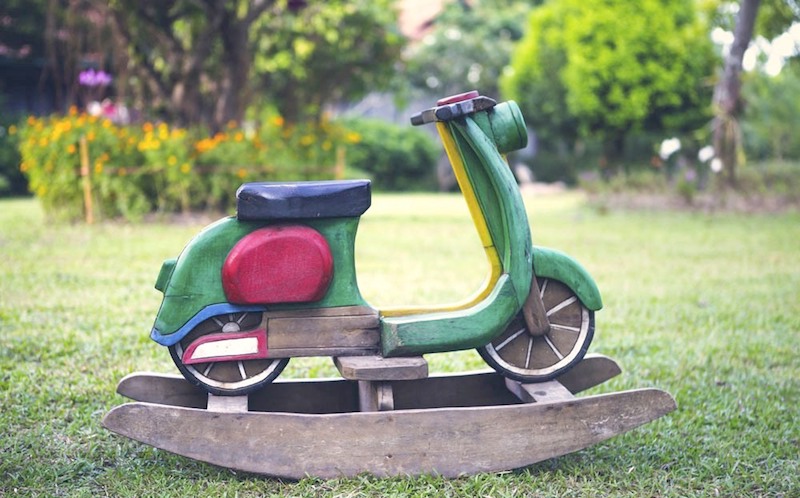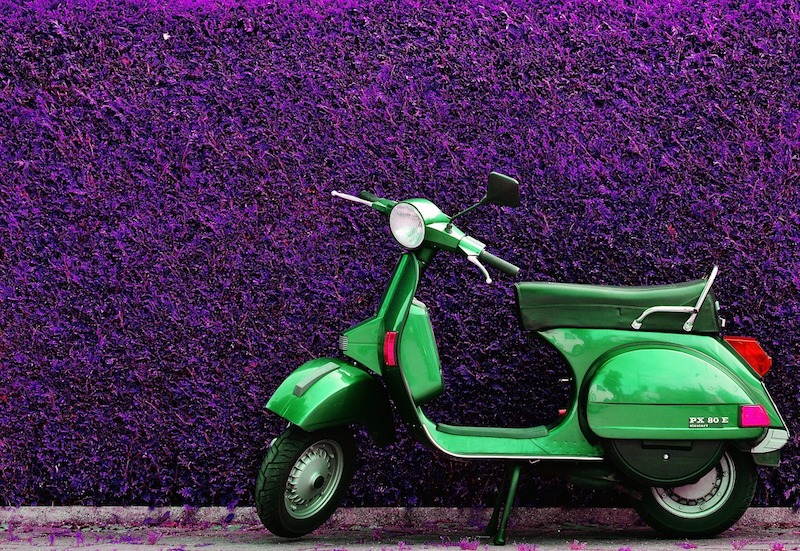The Vespa is an icon. Everybody knows it. And everybody should try it.
A Vespa ride is something you will remember, especially if you are not used to go around by scooter. And especially if you can do it in Italy, maybe on the roads of the Amalfi Coast. A breathtaking panoramic views at every bend, in a few words.
Renting a modern (or better a vintage) model in one of Italy’s beautiful cities is another good choice. Why not, during a Roman holiday…
Audrey Hepburn and Gregory Peck were only the first of a long series of great international actors who rode the world’s most famous scooter. Other movies go from “Quadrophenia” to “American Graffiti”, “The Talented Mr. Ripley”, “102 Dalmatians” and many more.
It’s easy to see many VIPS falling in love with a Vespa: Raquel Welch, Matt Damon, Gérard Depardieu, Jude Law, Eddie Murphy, Owen Wilson, Ursula Andress, Milla Jovovich. And in the past Marcello Mastroianni, Charlton Heston, John Wayne, Henry Fonda, Gary Cooper, Anthony Perkins, Jean-Paul Belmondo, Nanni Moretti, Sting and so on.
The History of Vespa
Luxury ship fitting and successively timber, seaplanes, and airplanes. This was Piaggio in its early days (1884), but by the end of the century, the factory was also producing rail carriages, goods vans, coaches and engines, trams and truck bodies.
Then, the company started producing aeroplanes. Soon, new plants were bought or built in different Italian cities and towns. Only after World War II, the iconic Vespa owed its existence.
What happened during World War II?
Piaggio had become an important factory. Its aeronautical plants were obviously related to military needs when the war started.
The bomber versions of its engines and planes turned the plants in Tuscany (Pontedera and Pisa) into very important military targets. The two Tuscan plants were razed to the ground by Allied and the Piaggio required a sudden restart.
A star was born
The process of rebuilding was really hard. Economic assessments and sociological considerations lead to the decision of entering the light mobility business. Enrico Piaggio wanted to create a viable alternative to the automobile for the people.
After a prototype called Paperino (Donald Duck‘s name in Italian) the first known version of this World renown scooter was released. The MP 6 looked like a wasp (Vespa in Italian) and this is how the name was found.
The Vespa was born as a single model motor scooter manufactured in 1946 and, just like every brilliant ideas, the Vespa divided the market and people.

Despite the scepticism of many experts, the output grew constantly after few years. Soon the Vespa was produced in 13 countries and marketed in 114. The company have gone from producing a couple thousands of scooters to almost two hundreds thousands vehicles.
In the 1956 the one millionth unit was produced. In the 1988, it reached ten million units. The rest is History. This data speak for themselves: Vespa is an icon. It’s been a symbol for different generations of men and women and keep being trendy, fashionable and stylish.
Why Vespa is an icon of Italian culture?
The Times wrote about the Vespa:
“a completely Italian product, such as we have not seen since the Roman chariot”
The foundation and spread of the Vespa Clubs and the extensive service network all over Europe and the rest of the world created by Enrico Piaggio made it easy. The cinema, the literature and the advertisings contributed to the myth.
The Vespa has been one of the biggest sales success in the entire history of Italian market. Cycle races, records, rallies and unbelievable long distance travels contributed to make this scooter a main character of the XX century.
Giancarlo Tironi, an Italian University student, reached the Arctic Circle on a Vespa. The Argentine Carlos Velez crossed the Andes from Buenos Aires to Santiago del Chile. Year after year, the Vespa gained popularity among adventure holiday enthusiasts: Roberto Patrignani rode one from Milan to Tokyo; Soren Nielsen in Greenland; James P. Owen from the USA to Tierra del Fuego; Santiago Guillen and Antonio Veciana from Madrid to Athens; Wally Bergen on a grand tour of the Antilles; the Italians Valenti and Rivadulla in a tour of Spain; Miss Warral from London to Australia and back; the Australian Geoff Dean took one on a round-the-world tour (from newatlas.com)
Riding a Vespa was synonymous with freedom and a new kind of being young, trendy, brave, fearless and safely in movement! This is why the Vespa is an icon of our Italian culture. Simply because it is! And if you’ll come to Italy, you will probably see many people riding this piece of history.
Read also: Do you know why the Ferrari logo is a prancing horse?
Vespa: all models since 1946 until the last one

